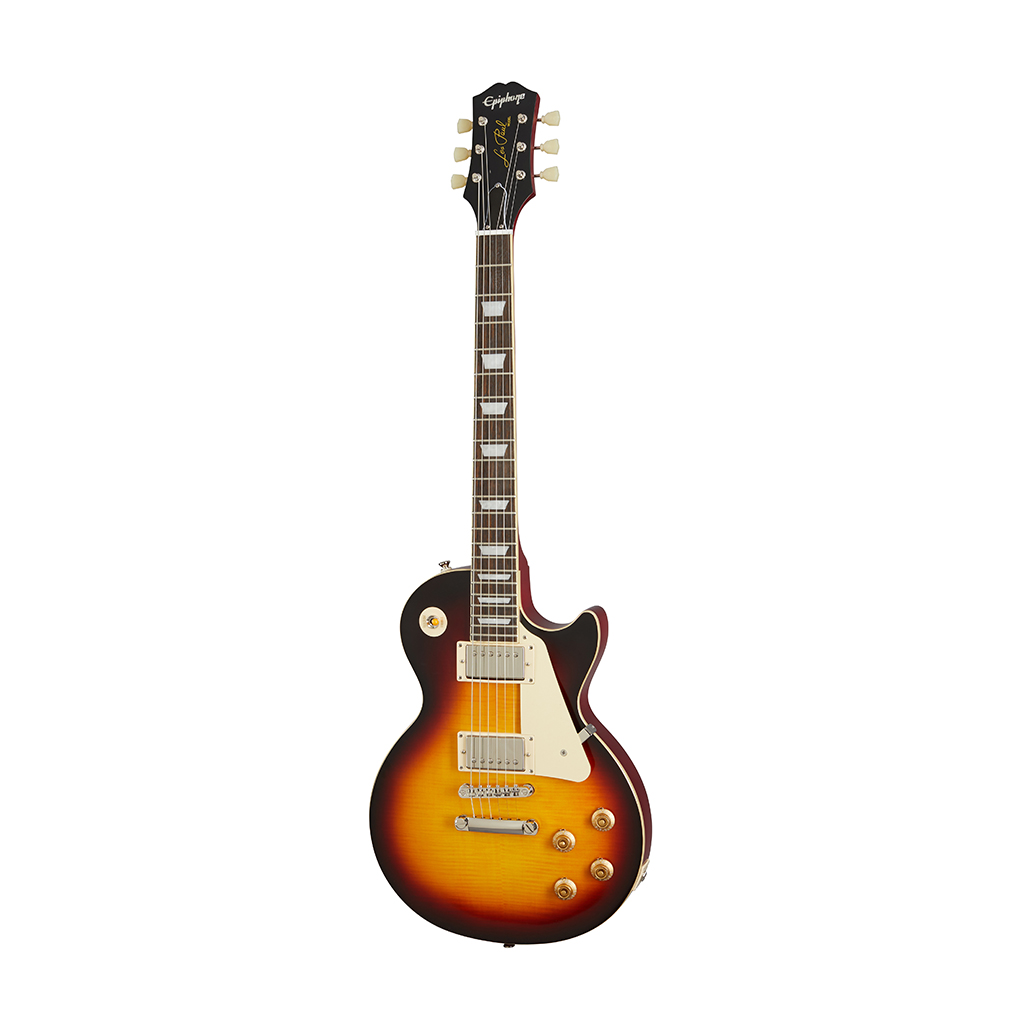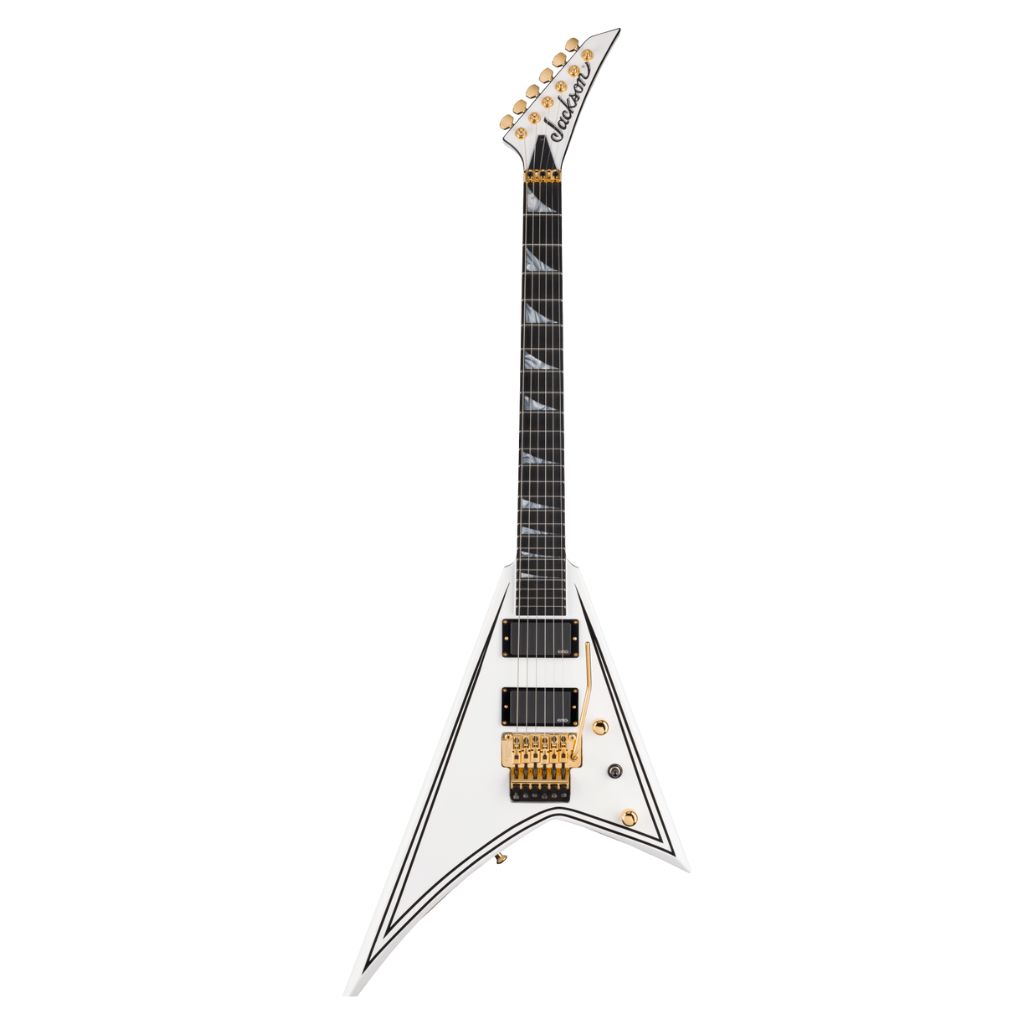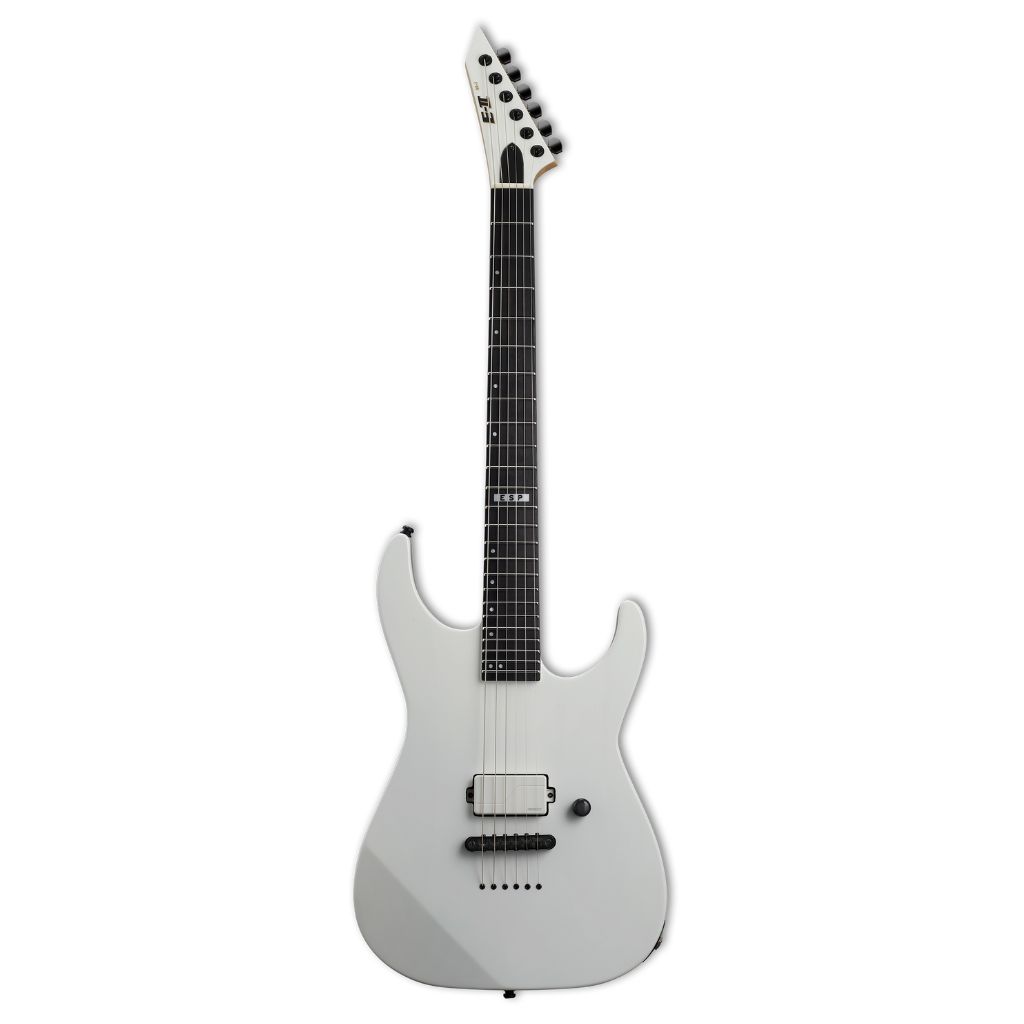Related Tags
What guitars does Kirk Hammett use? The varied instruments that power Metallica’s lead guitarist
From legendary Les Pauls to shred-ready S-types, the Metallica guitarist has a varied and interesting arsenal – here’s how to capture his sound

Kirk Hammett with his favourite ESP ‘Mummy’ guitar. Image: Mario Skraban/Redferns via Getty Images
For the last four decades, Kirk Hammett has held down the lead guitarist berth in one of the biggest bands in history: Metallica. While Hammett’s presence in the band has been a constant throughout the band’s pomp, his gear choices have been unusually varied – not just swapping between similar instruments for various brands, but choosing wildly different types of instruments at various moments.
If you’re a Metallica fan looking to emulate the Hamster’s tone, there are myriad different ways to go about it, and these are the guitars you’ll want to check out to get there:
Kirk Hammett’s ‘Greeny’ Gibson Les Paul

The most highly publicised guitar in Kirk Hammett’s vast guitar collection is ‘Greeny’, the 1959 Les Paul that went through the hands of Peter Green and Gary Moore before ending up in the possession of Hammett, who still uses the guitar on stage and in the studio.
While it looks like a standard Sunburst LP, famously ‘Greeny’ does have a specific mod that has a significant impact on the guitar’s tone. Greeny’s neck pickup is magnetically out of phase, which means that at some point, someone took the magnet out and rotated it lengthwise – it’s an easy mod to do at home, but thanks to the fame of ‘Greeny’ (and its role as the guitar of choice for Peter Green on the early Fleetwood Mac albums) companies like Seymour Duncan and Bare Knuckle make recreations of the pickup that you can simply drop in and wire up.
If all that sounds like too much hassle, Gibson and Epiphone both make recreations of ‘Greeny’ that you can currently buy. The Gibson versions (especially the Murphy Lab variety) are eye-wateringly expensive, but the Epiphone version, while by no means cheap itself, does have the distinction of being the first modern Epi to have the ‘correct’ Gibson style headstock on it. Alternatively, the Epiphone 1959 Les Paul Standard will get you most of the way there for a lot less money.
Kirk Hammett’s Metallica Gibson Flying V

While Hammett’s love of ‘Greeny’ is relatively recent (he only bought the guitar in 2014) his love affair with Gibsons of a different stripe goes back much further – all the way to his pre-Metallica days with thrash pioneers Exodus.
In Exodus and when he joined Metallica in 1983, Hammett’s primary guitar was a 1979 Gibson Flying V. This guitar was stock until around 1987, when the guitarist had EMG pickups and a BadAss Bridge installed. This means that Metallica’s first three albums were recorded using a stock Flying V from the late 70s.
Gibson also made a recreation of this guitar, but unless you have $15,000 burning a hole in your pocket, you’d probably be just as well getting a stock Flying V with T-Type humbuckers – the modern equivalent to the vintage T-Top humbuckers that were found in the original. Epiphone also did a limited run of these guitars that were much more affordable.
There’s another notable Gibson from Hammett’s career that is also currently available in Gibson’s range – a recreation of Hammett’s 1989 Les Paul Custom that features the same T-Type pickups as his V, and a Fishman piezo pickup in the bridge for acoustic sounds.
Kirk Hammett’s love affair with ESP S-types

In April of 1987, Kirk Hammett first met with ESP, and they made him a Strat-style guitar that featured a reverse-style headstock (an obvious Hendrix nod), a neck-through construction, EMG pickups, a Floyd Rose, 24 frets, along with some other minute aesthetic details. ESP delivered the guitar to Kirk that he would use on …And Justice For All and beyond.
That guitar was generally referred to as ‘Zorlac’ – the name came from a Zorlac Skateboards sticker that once adorned the guitar behind the bridge. It now resides in the Rock & Roll Hall of Fame and inspired the KH lineup of guitars from ESP that would make up the majority of his touring guitars for the next few decades.
In the years since, ESP has worked with Kirk to deliver a plethora of signature versions of his guitars, often featuring artwork from various vintage horror films. Among the many Kirk Hammett signature models released by ESP are the KH-V, KH-II, KH-3, KH-WZ, KH-602, and KH-202, which are all still in production. They all feature EMG pickups, although they vary based on the model – most feature Hammett’s signature EMG KH-BB Bone Breakers, and all feature Floyd Rose vibratos (except the KH-V). They all feature neck-thru construction aside from the budget KH-202 model, which has a bolt-on neck with ESP pickups. These guitars run the gamut in price from $600 to $5,500.
About ten years ago, Hammett’s longtime tech, Justin Crew stated that his main guitar in the studio since he got it in 1996 had been his ESP KH2 M-II known as ‘The Mummy’ which features artwork from the 1932 film The Mummy starring Boris Karloff. While many fans have been waiting for a production run of this particular guitar, it is not likely to happen for copyright and licensing issues..
‘The Mummy’ features EMG-81 in the bridge and EMG-60 in the neck, a Floyd Rose and a neck-thru construction. Hammett also came out with another KH-II M-II model called the ‘Ouija’ that featured graphics from the classic Ouija board – that guitar featured the same specs and WAS available as a production model. ESP does still make the KH-WZ, which has a White Zombie graphic featuring Bela Lugosi. That guitar features EMG Bone Breakers.
Other Kirk Hammett guitars

Hammett was no stranger to using cheaper guitars from Japanese companies like Fernandes – he used a couple of different Strat-style guitars in Metallica’s formative years. He also went through a Jackson phase, using their Rhoads model – that provided the bulk of the tones on the seminal Master of Puppets.
How to get Kirk Hammett’s guitar sound

Kirk Hammett is a generational guitar hero, and one where you can’t really pigeonhole his sound to a specific piece of gear, but there are some things you can do to give yourself a nice basis to start from. While Gibson has placed a lot of attention on ‘Greeny’ (for obvious reasons), Hammett only acquitted that guitar in the last 10 years, so if you’re looking for the classic Metallica tones from the late 1980s and early 1990s, you’ll want to look elsewhere. For one, you’ll need a guitar with a floating vibrato – preferably a Floyd Rose, and you’ll need some active EMG pickups – either a set of 60/81s or Hammett’s own signature Bone Breaker set. The Bone Breaker set seems to be a little cleaner and crisper.
Fortunately, ESP and Gibson both have Hammett signature gear readily available from any era for those who want something that will sound great off the shelf. If you have some faith in your DIY tech skills, you can drop active EMGs into just about any guitar you want to. A Floyd Rose install is a little more involved, often requiring a routing in the body – it’s probably easier just to check out something from ESP or a similar shred-focused maker instead.




